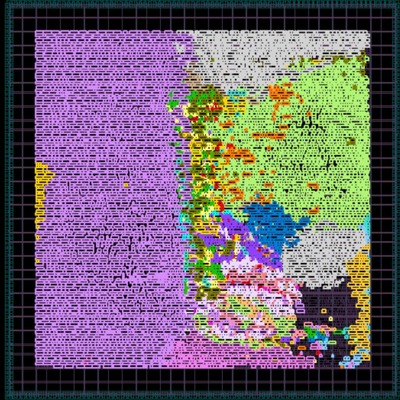Projects

Pointer-Chase Prefetcher
Pointer-Chase Prefetcher for Linked Data Structures
I am a software engineer in the edge TPU group at Google. I completed my Ph.D. at Cornell University where I developed domain-specific language, T2S-Tensor, to productively generate high-performance accelerators for dense tensor computations and a domain-specific hardware, Tensaurus, to accelerate mixed sparse-dense tensor computations. I was advised by Prof. David Albonesi and Prof. Zhiru Zhang. Before coming to Cornell, I obtained my Bachelor of Technology degree in Electrical Engineering from Indian Institute of Technology, Kanpur, where I was awarded with the President’s Gold Medal. You can find my CV here.
I am interested in re-thinking algorithm, language and hardware design to accelerate sparse and dense tensor algebra.
PhD in Computer Architecture
Cornell University
BTech in Electrical Engineering, 2014
Indian Institute of Technology, Kanpur
Sparse-sparse matrix multiplication (SpGEMM) is a computation kernel widely used in numerous application domains. MatRaptor, a novel SpGEMM accelerator, is high performance and highly resource efficient. Unlike conventional methods using inner or outer product as the meta operation for matrix multiplication, our approach is based on row-wise product, which offers a better tradeoff in terms of data reuse and on-chip memory requirements, and achieves higher performance for large sparse matrices. We further propose a new hardware-friendly sparse storage format, which allows parallel compute engines to access the sparse data in a vectorized and streaming fashion, leading to high utilization of memory bandwidth.
Tensor factorizations are powerful tools in many machine learning and data analytics applications. Tensors are often sparse, which makes sparse tensor factorizations memory bound. In this talk, I present a hardware accelerator, Tensaurus, that can accelerate both dense and sparse tensor factorizations. We co-design the hardware and a sparse storage format, which allows accessing the sparse data in vectorized and streaming fashion and maximizes the utilization of the memory bandwidth. We also extract a common computation pattern that is found in numerous matrix and tensor operations and implement it in the hardware.
We present a language and compilation framework for productively generating high-performance systolic arrays for dense tensor kernels on spatial architectures, including FPGAs and CGRAs. It decouples a functional specification from a spatial mapping, allowing programmers to quickly explore various spatial optimizations for the same function. The actual implementation of these optimizations is left to a compiler. Thus, productivity and performance are achieved at the same time.
InAccel, a world-pioneer in the domain of FPGA-based accelerators, has released an integrated framework that allows to utilize the power of an FPGA cluster for face detection, see news Specifically, InAccel has presented a demo in which a cluster of 8 FPGAs are used to provide up to 1700 fps (supporting up to 56 cameras with 30 fps in a single server). The HLS implementation used unded the hood is the face detection design proposed in our FPGA 2017 and FPGA 2018 papers, see this. See the demo from inaccel below:

Pointer-Chase Prefetcher for Linked Data Structures
I have been TA for following courses at Cornell University: